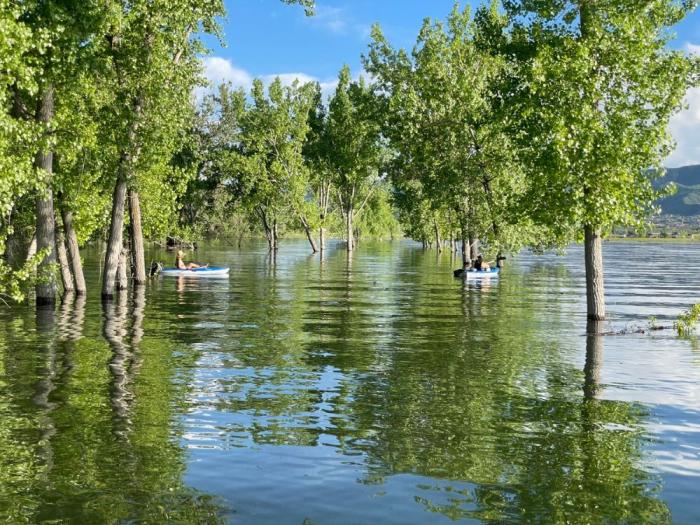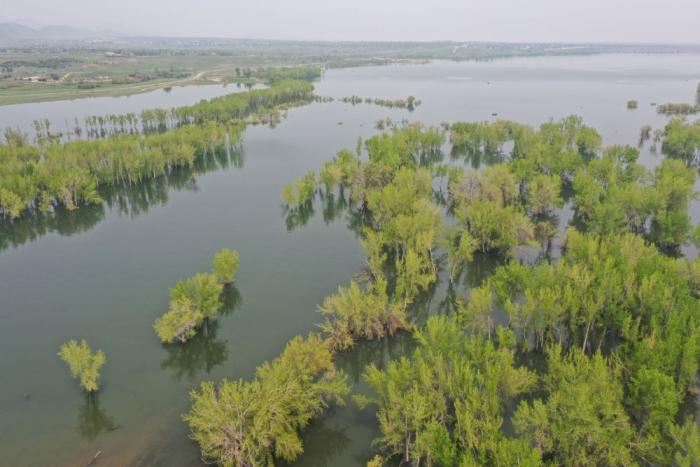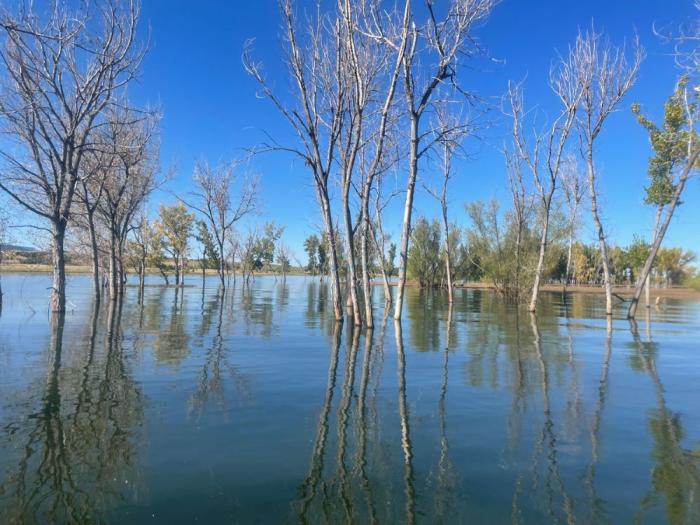Higher water levels and other changes at Chatfield Reservoir
Editor's note: In mid-October, Colorado Parks and Wildlife announced that work would begin to remove dead and dying trees at Chatfield to ensure visitor safety and prevent tree debris from clogging the dam outlet.
Visitors to Chatfield Reservoir can expect to see higher water levels and changes to the tree canopy with the approval of the Chatfield Storage Reallocation Project.
The project was approved in 2020 and allowed the U.S. Army Corps of Engineers, which owns Chatfield Reservoir and Dam in Littleton, to allocate an additional 20,600 acre-feet of water to be stored in the reservoir for municipal and agricultural use without jeopardizing the dam’s ability to manage floodwaters.
In 2023, the water level in the popular reservoir at Chatfield State Park reached its new “full pool” or “operational level” of 5,444 feet above sea level for the first time since the project was approved — 12 feet higher than the reservoir’s old “full pool” elevation.
Think of the “full pool” like the ideal water level in a bathtub.
Multiuse reservoir
Chatfield opened in 1975 and was built to hold back floodwaters after a disastrous flood down the South Platte River through the metro area in 1965.
Over the years, Chatfield became a popular recreation area, and Denver Water started storing water in the reservoir for its uses in 1979.
The concept for the Chatfield Storage Reallocation Project began in the 1980s as a way to find additional multipurpose water storage for agriculture and the growing Front Range population using an existing dam, according to Charly Hoehn, project manager for the Chatfield Reservoir Mitigation Company, or CRMC, an organization created to oversee the additional water in the reservoir.
The Chatfield Storage Reallocation Project allowed Denver Water to store more water in the reservoir — and gave permission to store water for nine other agencies in Adams, Douglas, Jefferson, Park and Weld counties, as well as the state of Colorado.
“This project is a great example of how local, state and federal partners can all work together to find creative solutions to Colorado’s water issues,” Hoehn said. “All of our partners, ranging from agriculture communities to municipalities to recreators and environmental enthusiasts, have something to celebrate."
Environmental pool
Another objective of the reallocation project was to improve the habitat along the South Platte River by creating an “environmental pool” of water within the reservoir.
The pool of water can be used any time during the year for strategic releases into the South Platte River to enhance stream flows and improve water quality.
Colorado Parks and Wildlife will manage the environmental pool to help wildlife habitat and recreation as the South Platte River flows through the metro area.
Hoehn said the environmental pool was made possible through the generosity and hard work of 22 public and private organizations, foundations, nonprofits and individuals.
The project also included additional environmental mitigation measures, such as riffle drop structures, side channels and sloughs along Plum Creek and the South Platte River above the reservoir.
“These features proved to be highly effective during the heavy rains and minimized the adverse effects of erosion during the high flows,” Hoehn said.
What about the trees?
When Chatfield Reservoir is at or near the new “full pool” water level, hundreds of existing cottonwood trees along the edges of the reservoir will be partly submerged in water.
Hoehn said the Chatfield Reservoir Mitigation Company (CRMC) is closely monitoring the health of those trees in the new fluctuation zone, which is the areas of the reservoir between 5,432 feet and 5,444 feet in elevation above sea level.
“We expected to see a level of die-off among the trees when the water level was raised,” Hoehn said. “It’s hard to determine how long the cottonwoods will survive as the water level will fluctuate each year. So far, we’ve also noticed that the age of the trees may play a role in their decline with the mature trees seeming to be doing better.”
To prepare for the impact on vegetation, CRMC, in coordination with local experts, Colorado State Forest Service (CSFS), Colorado Parks and Wildlife, and the Army Corps, developed an Adaptive Tree Management Plan, which outlined objectives to retain healthy trees, while removing declining and dead trees.
To account for the loss of the trees, Hoehn said CRMC has performed environmental mitigation along the South Platte River and Plum Creek corridors surrounding the reservoir’s new, higher edge to improve wildlife habitat.
As part of these efforts, CRMC has planted more than 5,000 new cottonwoods along with 95,000 shrubs since 2017. Ecologists have also noted several areas where shrubs and trees have naturally reestablished along the water’s new edge.
“It’s always tough to lose some trees, but we planned for this and that’s why we took a proactive approach to plant the new trees,” Hoehn said. “Managing water in the West is always a balancing act, and we do our best to juggle water supply for our growing community with the environmental impacts.”
Hoehn said dead trees will be removed. However, the work can only be done when the water storage level drops and ground conditions stabilize, which typically occurs in the winter months. Hoehn said all tree removal work is done in compliance with the Migratory Bird Treaty Act.
Boater safety
Hoehn stressed that boaters should use caution when going through the water as beavers have been gnawing on some of the trees and causing some to fall. High winds could also blow down dead or weakened trees and branches, so boaters are encouraged to wear life jackets at all times when on the water.
Future water level
As for the future of Chatfield, Hoehn said water levels will be different each year and fluctuate throughout the summer. Water levels depend on mountain snowpack, rain and water demand.
The level could go higher than the full pool in the event of a large rainstorm, when Chatfield would be used to store floodwaters.
Denver Water works with Colorado Parks and Wildlife to maintain a water level at Chatfield of at least 5,426 feet above sea level from Memorial Day to Labor Day, unless the utility has to impose watering restrictions due to drought conditions.
“This project has been years in the making and all of the partners are happy to see the reservoir reach its new height,” said Jeff Bandy, water planning manager at Denver Water.
“We’re excited that Chatfield can continue to serve its many duties and be a great benefit to our community for years to come and provide water security for our customers.”
More information about the project and a list of frequently asked questions can be found on the Chatfield Reservoir Mitigation Company website.
Check out this story from 9News to see an interview with Charly Hoehn about the high water at Chatfield.






